The Handground grinder had one of the most successful Kickstarter campaigns of any coffee-related product. The crowdsourced design shook the media and raised over $300,000.
But it’s time for the real test: how does the Handground perform?

The grinder is one of the most neglected tools in the coffee trade.
Giving the grinder the cold shoulder is understandable. When entering the realm of craft coffee, we have big eyes for the shiny things. The espresso machines, cold brew towers, and eccentric brew methods tend to overshadow boring items like grinders.
The grinder is a necessity. Narrow grind particle size distribution is your bread and butter. It’s your lifeline. It’s more than the icing on the cake; it’s the eggs and flour.
Particle size distribution refers to the size similarity between individual coffee grinds.
All metaphors aside, a consistent grind makes for consistent coffee.
When dialing in your coffee recipe, grind size should always be considered first – as it makes the most difference in manipulating flavor profile. Sadly, grinders can be expensive. This is why many of us go the hand-grinder route. Most hand grinders are cheap, keenly portable, and simple to use.
But do they deliver? Some do, and many don’t.
I wanted to look at a grinder that found its inception on Kickstarter. Exceeding its goal by over $250,000, the Handground stormed the markets. I’ll also briefly compare it to the EvenGrind – a much cheaper alternative. Is this grinder worth its salt?
Let’s find out.
A Handground Coffee Grinder Review
The co-founders of Handground, Daniel Vitiello and Brandon Warman, decided that it was time to conceptualize “a coffee grinder for the third wave”. These two embarked upon a noble quest to create a grinder “specifically for specialty coffee drinkers.”
Third Wave alludes to the specialty coffee movement that evolved post-1974 and focuses heavily on black coffee’s unique characteristics.

Now, as a craft coffee advocate, I am in favor of a “specialty hand grinder”. Who wouldn’t be?
It could be argued that grinders of poor quality actually waste coffee. Direct trade coffee isn’t cheap and is not an infinite commodity. One goal as coffee supporters and purveyors is to squeeze every last morsel of goodness from each bean.
Having an affordable, trustworthy hand grinder promotes quality and sustainability.
But the Handground is not that grinder. The Handground team tried. Their noble attempts fell short, disappointing many of us. We were rooting for them.
Here’s where they went wrong: they focused on ergonomics and neglected to grind quality performance.
Let’s focus on the good first.
Ergonomics
This grinder feels right. They knocked it out of the park here. Hand grinders usually lack human compatibility. They feel awkward, clunky, and foreign. Grinding coffee by hand isn’t particularly enjoyable, but the Handground is an exception.
A solid aluminum hand crank is featured on the SIDE of this grinder, allowing for more natural wrist and arm movement. The crank is accompanied by a beautiful pakka wood knob. It feels good and looks good.
There’s even a super grip pad at the bottom of the catcher. This lets you operate the device on a flat surface. I’ll give the Handground this: it’s intuitive, sleek, and user compatible.
Handground’s materials and design are superb:
- Borosilicate glass catcher
- Durable triple axle design
- Easily detachable lid and hopper
- External grind adjustment knob
- 40mm alumina ceramic burrs
Everything just mentioned is what the coffee craftsman yearns for. A well-made device that doesn’t get in the way. However, for a grinder to truly be “specialty” it must deliver on all fronts.
Let’s take a look at where the Handground went wrong in terms of performance.
Quality / Performance
The grinder features 15 pre-set grind size options. One can navigate through these via the numbered ring selector (adjusted in increments of 1/2). Each “click” represents a 125-micron increase in coarseness.
When it comes to grind size consistency, the Handground website states…
The axle is mounted on metal bushings in three locations to keep it stable while grinding and eliminate burr wobble. Each axle is milled on a 5 axis CNC that maintains tolerances of 0.004 inches. The combination of added stability and razor thin tolerances allows Handground to achieve a consistent grind, every time.
Now, all of this works in theory. It sounds good on paper, and honestly, I would be sold at this point… if I hadn’t used the grinder myself. This “razor thin” axle tolerance does little to help narrow the particle size distribution.
Up until size 4 on the number ring selector, the grind quality is par.
- 1
- 2
- 3
- 4
Anything after size 4 is a maelstrom of boulders and fines. The folks at Handground recommend that the Chemex setting be at 5 and the French Press at 8. But frankly, half of the settings are unusable. Brewing French Press or Chemex with the recommended settings would result in an imbalanced and under-extracted cup.
- 5
- 6
- 7
- 8
As you can see, Handground missed the mark. The grind consistency isn’t even good for a hand grinder.
To prove this, let’s briefly compare the $80 Handground to the $35 Kuissential EvenGrind.
EvenGrind Comparison
At first glance, the EvenGrind seems to be a lackluster emulation of the Hario Skerton. It’s bulky, plastic, and plain. In terms of appearance, the Handground reigns triumphant. Let’s cut to the chase…
When the quality of grind is observed, the EvenGrind wins. Hands down. No dispute. No question.

Regardless of its lack of aesthetic flair and ergonomic integrity, the EvenGrind produces a remarkably narrow particle size distribution! Why is this? How does this $35 grinder beat out the Handground’s “specialty” design?
Well, for starters, its patented stabilizing cage is effective. Handground’s triple axle system is not.
When observing the grind comparison photos below, you’ll notice that after 4, the EvenGrind sees a drop in consistency – just like the Handground.
Even so, the Handground falls short of the EvenGrind on every setting. The difference is noticeable visually – and in the final cup.
- 1
- 3
- 5
- 7
- 9
- 11
- 13
- 15
EvenGrind delivers an even grind. Sometimes simple systems are the best.
Check this out: the full Kuissential EvenGrind review.
Conclusions
An attempt was made. The Handground team advertises a grinder for the specialty coffee drinker, but they instead deliver a pretty mechanism with sub-par grinding capability. I would argue that a quality grind outweighs aesthetic.
Would you rather pay $35 for a better coffee grinder, or $80 for a pretty one that feels good? The choice is yours.


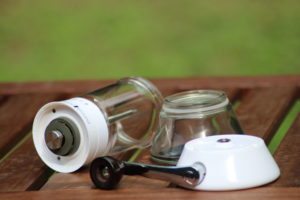

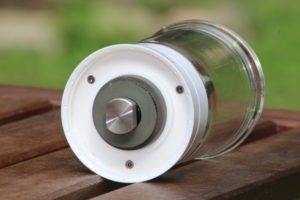
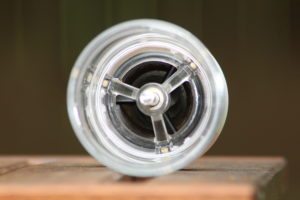








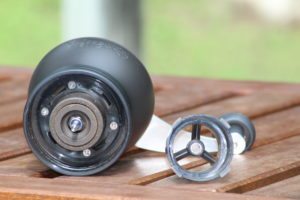
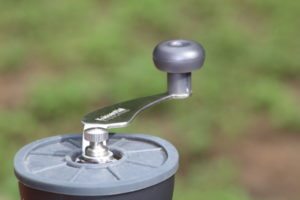











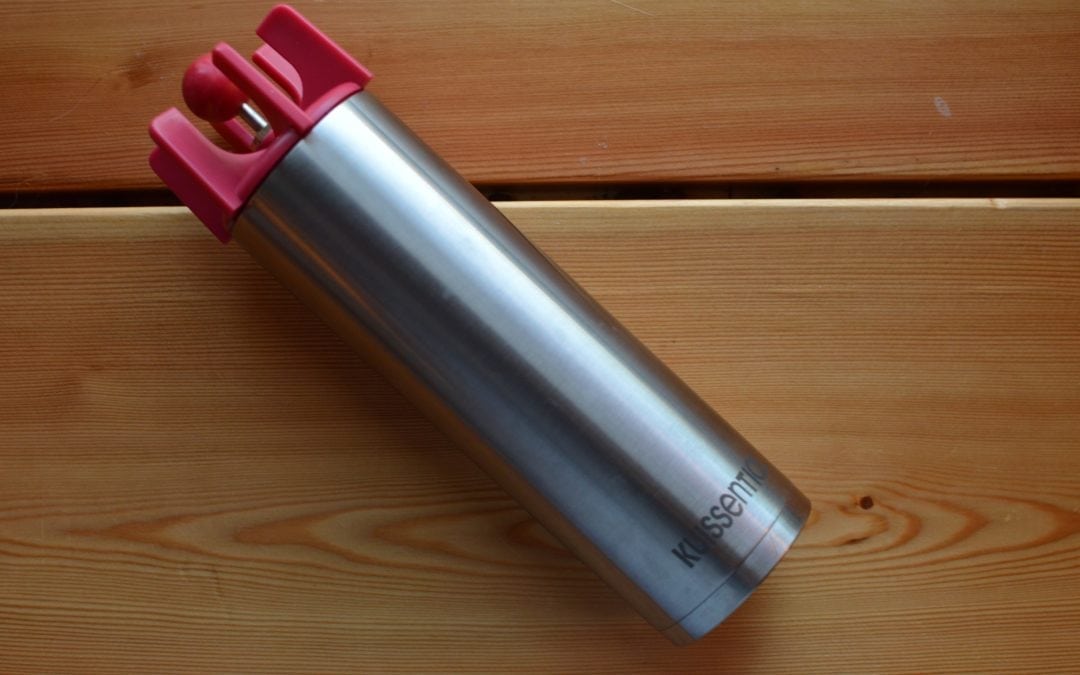


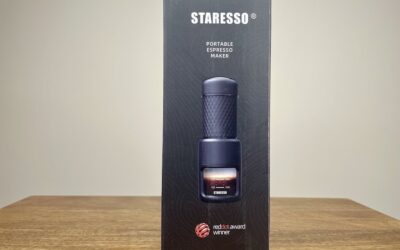




0 Comments